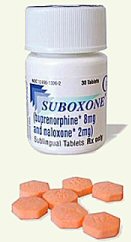Sadly, opiate addiction affects millions of individuals worldwide. It isn’t just the heroin junkie on the corner, needing a fix, anymore. It includes millions of other individuals who, whether legitimately or illegitimately, began using opioid drugs. Without help, most are unable to stop.
As of 2010, there were approximately 1.9 million people in the United States addicted to prescription opioid pain relievers and 359,000 addicted to heroin, according to The National Institute on Drug Abuse. Dependency to opiates can occur in as little as 3 days and the time it takes to become addicted varies by each individual. Once the individual becomes addicted, one of the biggest fears, and a catalyst to continue using, is the withdrawal symptoms they know they will suffer when they try to stop using the drug.
Research shows that there are many benefits of medically-assisted opiate detox that can alleviate the withdrawal symptoms, and also reduce the cravings which, so often, result in relapse.
How Does Medically-Assisted Opiate Detox Work?

Suboxone is an opiate detoxification medication.
Opioids act on specific receptors in the brain and the body. When people addicted to opioids undergo detox, withdrawal symptoms such as pain, diarrhea, nausea, sweating, and vomiting may occur. These symptoms can be mild to severe and can contribute to a variety of other unpleasant conditions which, in chronic cases, may become dangerous.
During the first stage, it is important to get all of the opiates out of the body. Medically-assisted opiate detox can benefit the addict by providing care from qualified professionals who know how to alleviate and manage the withdrawal symptoms by providing the proper medications throughout the process. Physicians can also provide medications that work through the same receptors as the opiate drug, but are safer to use, while effectively, reducing the cravings for opioids.
Three types of medications commonly used include:
- Agonists, which activate opioid receptors, such as Methadone (Dolophine or Methadose). Taken orally, these antagonists are slow acting and can prevent withdrawal symptoms.
- Partial agonists which activate opioid receptors but produce a diminished response. Buprenorphine (Subutex, Suboxone) can relieve cravings without producing the “high” or dangerous side effects of opioids.
- Antagonists which block the receptor and interfere with the rewarding effects of opioids. Naltrexone (Depade, Revia) are examples of antagonist medications.
After treating the individual’s medical needs while participating in a medically-assisted opiate detox program, these medications may be prescribed to the addict as a continued maintenance program for them to remain free from opiate drugs.









